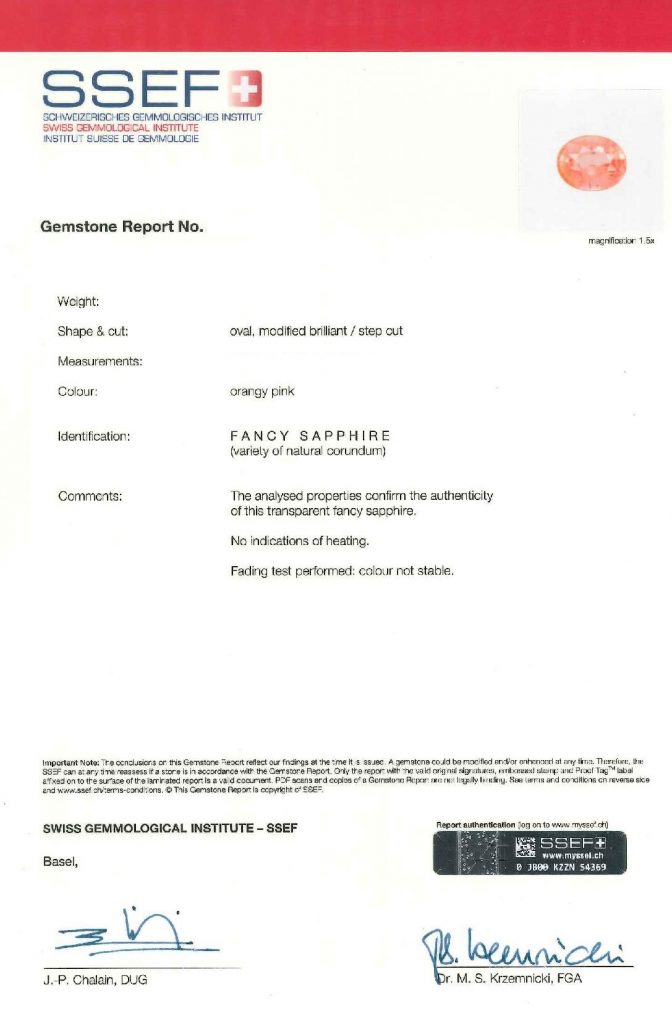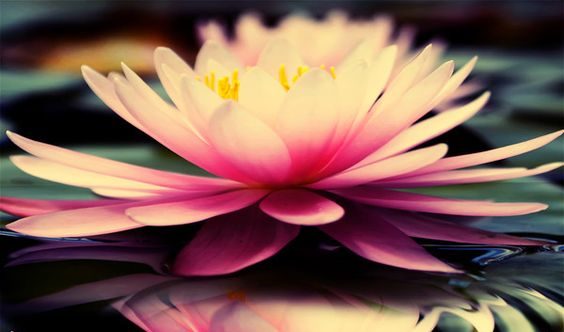There are no rules about how to analyze a gemstone. Each laboratory is free to set up its own gem analysis process. So the SSEF applies the Fading Test to measure the stability of the stone’s color.
If the Fading Test highlights a color out of the color range, the stone won’t be eligible for Padparadscha status.
Up to now, most laboratories do not practice this Fading Test.
As the French Laboratory of Gemmology told us, the Padparadscha name is a trade label and doesn’t refer to a mineralogical species. The LFG Scientific Committee called for a meeting to talk about this color stability matter.
Color is due to coloring elements present inside the gem. The “Padparadscha color” refers to a subtle but unstable pink-orange color. Pink comes from chrome and yellow from iron. More to this lies a colored hole center (which is a defect in the atomic structure of the stone). This last element is probably responsible for the Padparadscha color instability.
Furthermore, Padparadscha does not always react the same way according to its environment. The yellow color will intensify if the stone is highly exposed to sunlight. The stone will resume its initial color some time later. If the stone is exposed to halogen light, the reaction will be reversed and the yellow color will fade out.
Is it fair to judge a stone’s color from its reaction under artificial light? Should we not stick to the color that we can look at under natural light?
* Definition of a colored trapped hole center :
A colored center is a defect in the crystal structure that absorbs light. A hole-colored center results from the expulsion of the electron from its original orbit, caused by irradiation, creating a gap in the crystal structure. The displacement of this electron modifies the original color of the gem.


